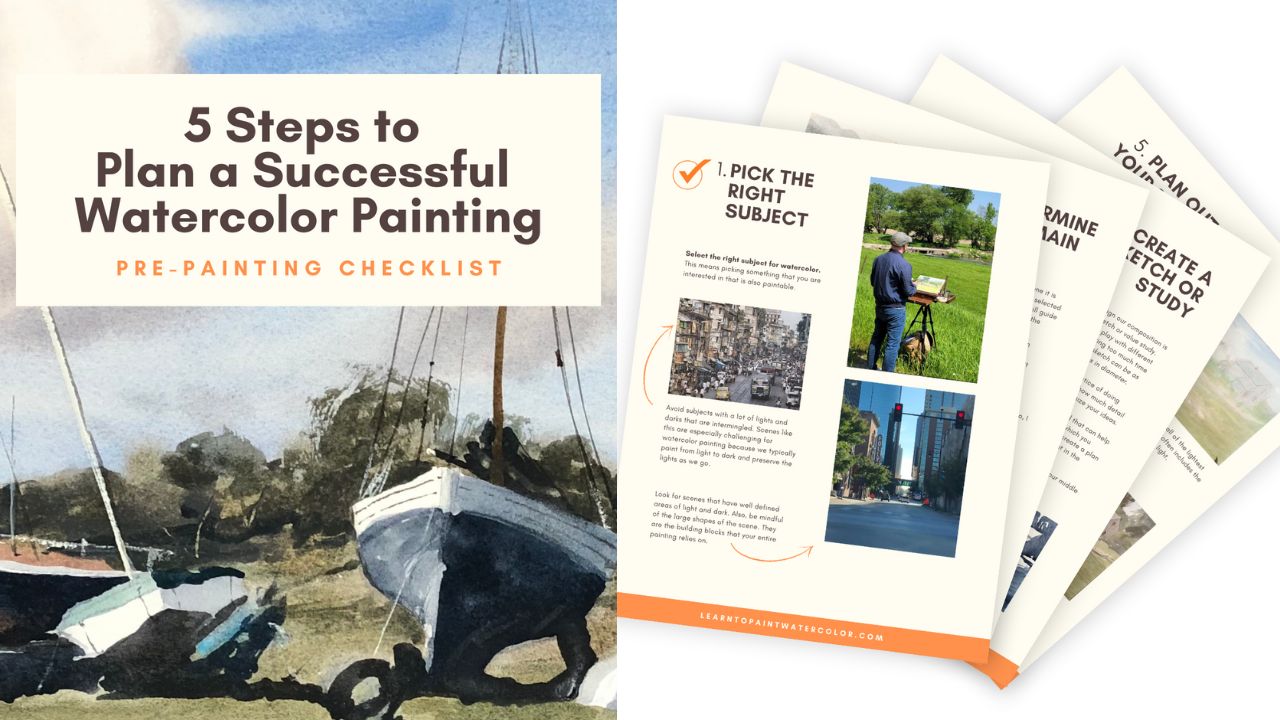How to Simplify Your Reference Photos (For Watercolor)
Jan 26, 2022As artists, we are inspired by the things around us - the scenes of everyday life and the majestic beauty of nature. Hopefully you are collecting some of those moments through the lens of your camera.
As we admire these scenes, it is easy to forget that our job is more than just rendering reality. We are in control of what gets included in our painting, how things are arranged, and the aspects that we emphasize.
So today, we are going to talk about how to edit a reference photo when using it as inspiration for a painting.
You’re never going to find that perfect subject, that scene that is flawless with all the elements you want included. Maybe not everything is aligned in the thirds of the painting where you want your action to be. Maybe the sky doesn’t look exactly how you want it. Or maybe there aren't figures in your scene, but you want them included.
It is important that you empower yourself as the artist to make necessary changes and infuse your point of view into the scene.
To do this, here are some strategies:
- Cropping: I rarely take a reference photo that doesn't need cropping. Cropping a photo can help you alter the composition. It can help you place important items in certain areas of the painting. It can highlight what you think is important in the scene. So get comfortable with cropping your reference photo.
- Move Elements Around: If a building in your reference photo is too high, lower it. If there are trees blocking your view of something, move it. If there are cars where you want open space, take them away. Reality is complicated and messy. So be comfortable re-arranging, moving things around, or even eliminating them from the scene in order to group things in a creative and appealing way.
- Exaggerate: When you look at your reference photo, ask yourself what drew you to the scene. Why do you want to paint it? It can be helpful to think about that thing that drew you to the scene and then exaggerate it a little bit. Remember, we are creating art and saying something about the scene, not just reflecting a scene in front of you.
Remember, you are telling the viewer what's important.
You are transferring some of you into the painting.
You are in control of the scene as the artist and can turn this into whatever you want it to be.
Watch my video to see an example of how I transformed a photo that I took into a painting. I show you the steps I took to make it my own and to emphasize the parts of the scene that spoke to me.
Also, if you haven’t had a chance to view my free tutorial - How to Avoid Overworking Your Painting - follow the link below. I hope it can help you like it has helped other students.
Thank you for spending some time with me today!
Keep practicing, keep pushing forward, and I'll see you next time.
-Matt
